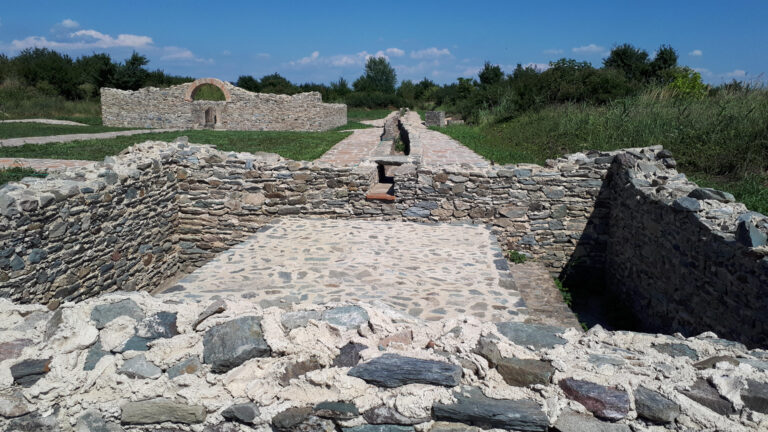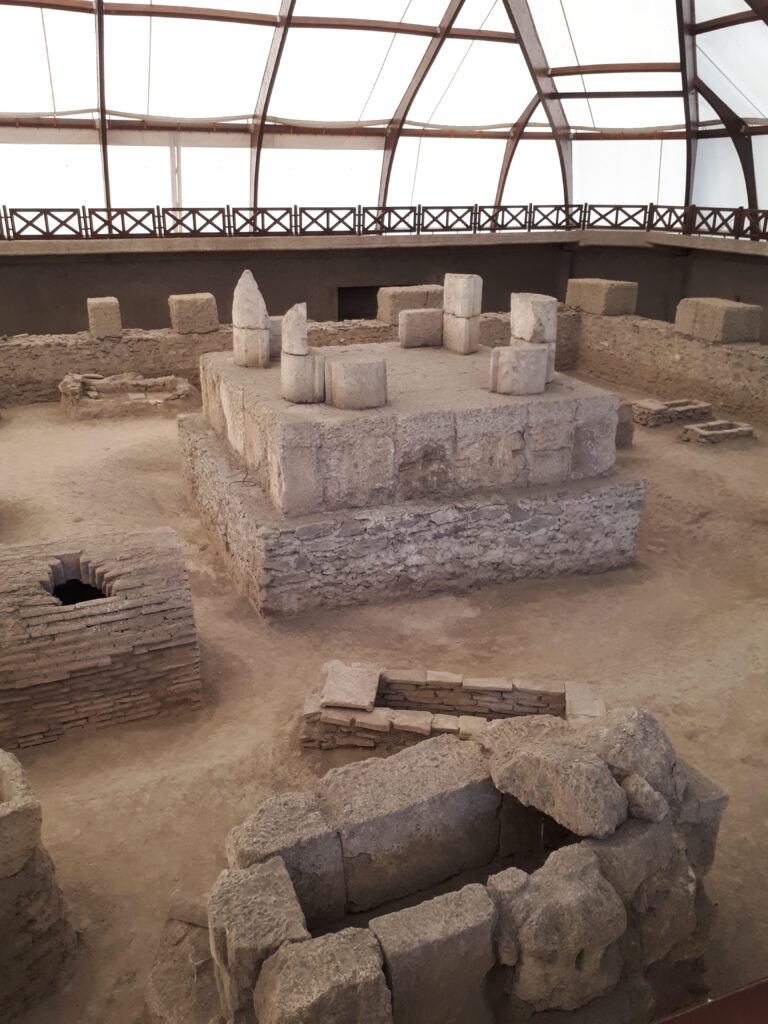
From the 7th century CE onwards (coincident with the fall of the Western Roman Empire), large numbers of people emigrated from Eastern Europe, likely related to the arrival of Slavic-speaking populations, which resulted in present-day Balkan residents having 30%–60% Slavic ancestry seen in present-day Balkan peoples.
“We found this genetic signal of Slavic migration all across the Balkans,” says senior author and paleogenomicist Carles Lalueza-Fox of the Institute of Evolutionary Biology (IBE:CSIC-Universitat Pompeu Fabra) and Museu de Ciències Naturals de Barcelona. “This could have important social and political implications given that the Balkans has had a long history of conflict associated with their perceived identities.”
Most ancient DNA studies focus on pre-history—before the written record—but ancient DNA methods can also provide insight into more recent historical periods, especially when used in combination with historical and archeological information.
“Ancient DNA can give a lot of insight into historical periods, especially for regions where historical sources are scarce or when we don’t know whether sources are biased or not,” says first author and population geneticist Iñigo Olalde of the University of the Basque Country (UPV/EHU). “For example, most historical sources from the Balkans are written from the side of the Romans because the Slavic people didn’t write at that time.”
Previous studies have investigated the ancestry of people who lived in Italy and England during and after the fall of the Roman Empire, but little is known about demography and ancestry of the Balkans during this time.
“This region was one of the distant frontiers of the Roman Empire, which makes it interesting to study because this is clearly a place where you would expect people to come in contact with people from outside the Empire, so you can test things such as globalization,” says Olalde.
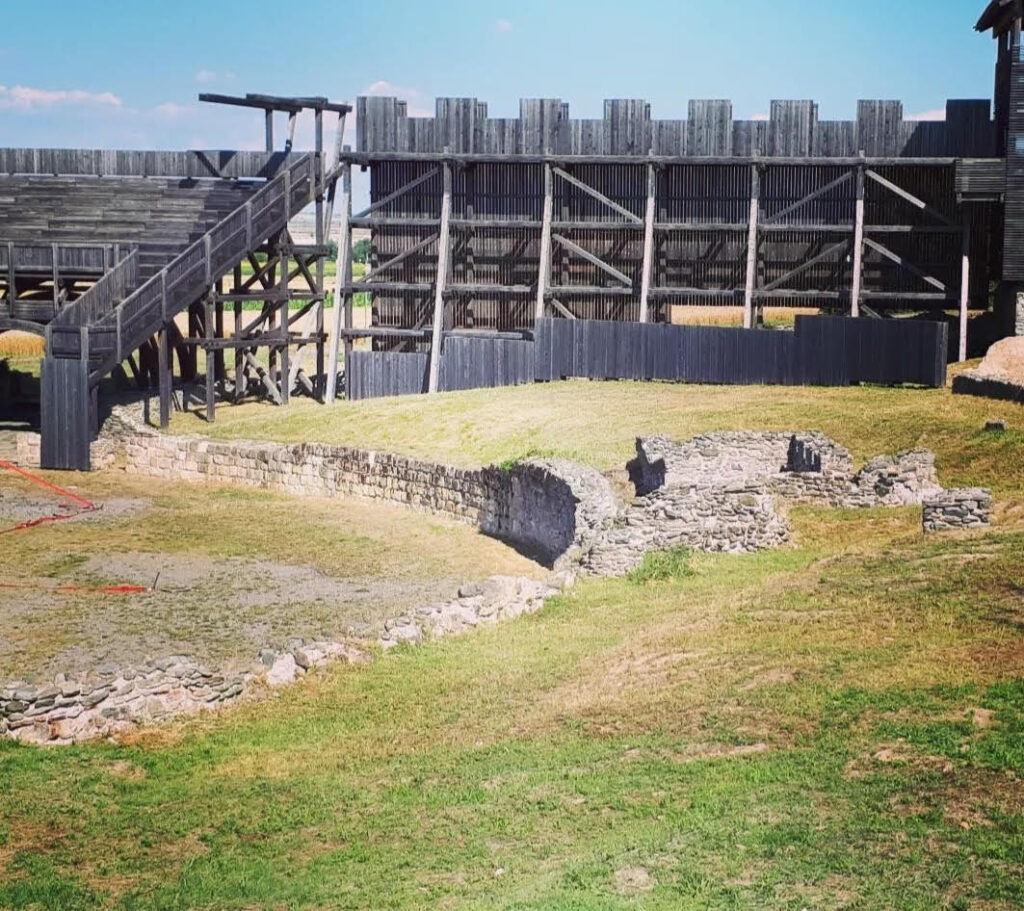
To explore the population history of the Balkans and examine the influence of the rise and fall of the Roman empire, the researchers extracted DNA from 136 ancient individuals excavated from 20 different sites across the Balkans—defined as the region bounded by the Adriatic, Central Mediterranean, and Aegean Seas and the Middle and Lower Danube and Sava Rivers. These sites included large Roman cities, military fortresses, and small rural towns. The team focused on three periods: during the expansion and height of the Roman empire (1–250 CE), during the late Imperial period (circa 250–550 CE), and following the Western Empire’s collapse (550–1000 CE).
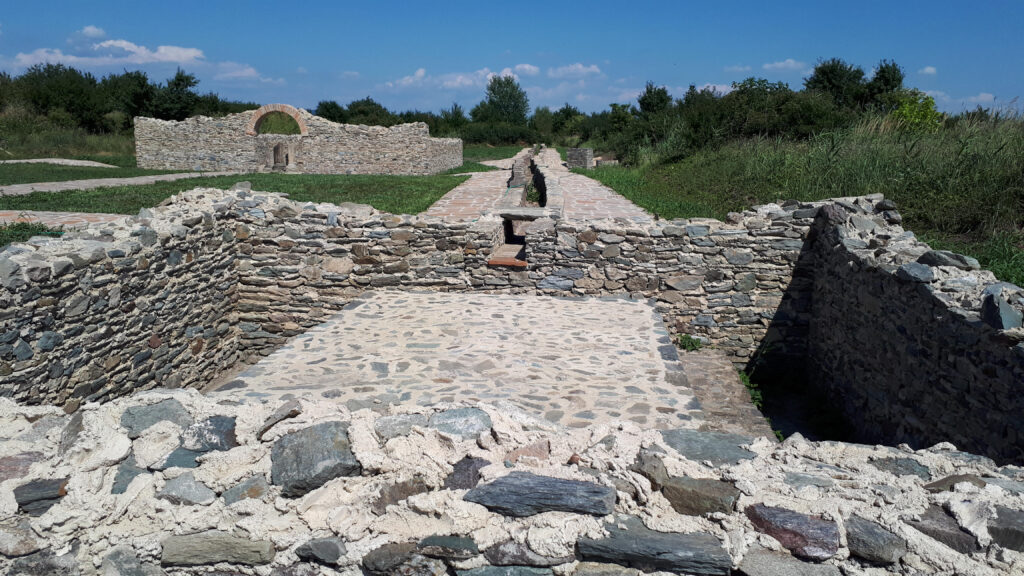
To provide cultural and historical context for the genetic data, the team collaborated with local archeologists and historians. For each grave, they documented burial type, as well as any objects buried alongside the individuals, such as coins, jewelry, pottery, tools, and weapons. The researchers also used radiocarbon dating to verify the age of 38 of the ancient individuals, which generated isotopic data that provide a window into those individuals’ diets.
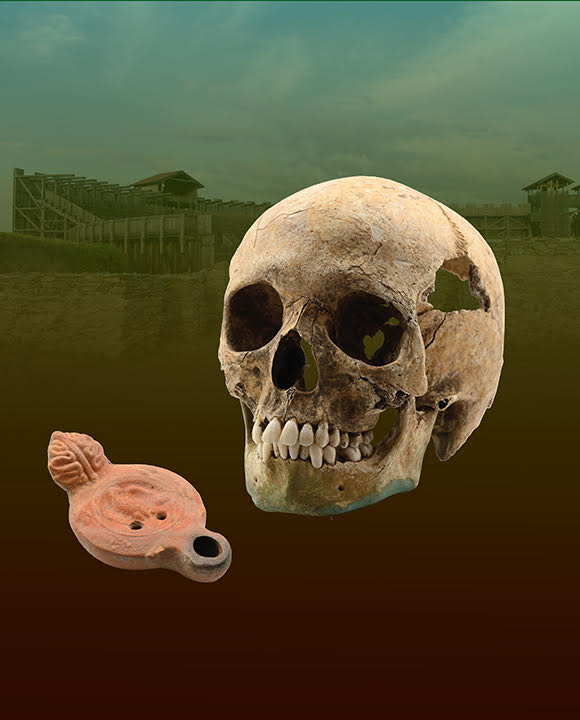
The researchers were surprised to find no evidence of Italian Iron Age ancestry in the Balkan populations during the height of the Roman Empire. Instead, they showed that there was an influx of people from Western Anatolia, another part of the Roman Empire, during that period. They also found evidence of individual migrations into the Balkans from both within and outside the Roman Empire. Notably, a 16-year-old male who was excavated from a necropolis in a large Roman city was of 100% East African ancestry. The individual was buried with an oil lamp depicting Jupiter-related eagle iconography, but isotopic analysis of his teeth indicated that he had consumed marine protein sources during his childhood and therefore had likely grown up in a distant location.
“This was the only full Eastern African individual that we analyzed, and he was also a clear outlier with respect to the diet compared to the rest of the individuals buried in the same necropolis, which tells us that this individual clearly grew up outside the borders of the Roman Empire,” says Lalueza-Fox.
During the late Imperial period, between 250 and 550 CE, the researchers detected migrants with mixed ancestry from Northern Europe and the Pontic-Kazakh steppe.
“We found that those two ancestries—central/northern European and Sarmatian-Scythian— tended to come together, which suggests that these are likely to have been multi-ethnic confederations of moving people,” says senior author and population geneticist David Reich of Harvard University.
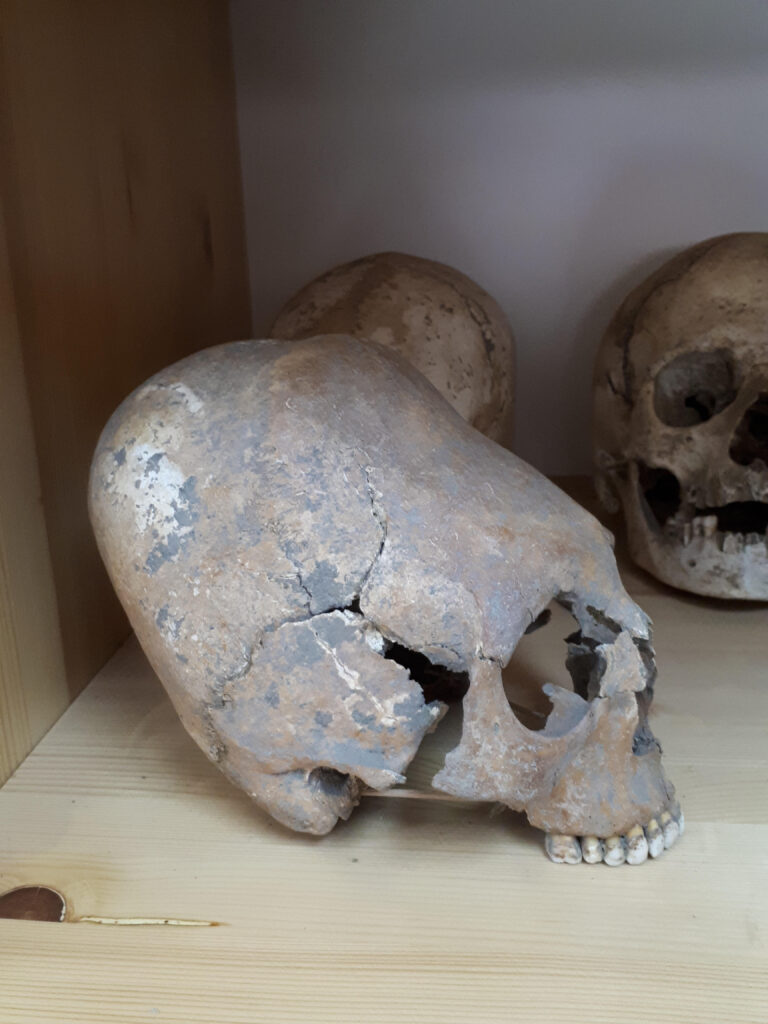
However, these sources of ancestry disappeared after 700 CE. From 600 CE, shortly after the fall of the Western Roman Empire, there was a major influx of individuals from Eastern Europe. After 700 CE, individuals in the Balkans had very similar ancestral composition to present-day groups in the region, suggesting that these migrations resulted in the last large demographic shift in the area. These migrations coincide with recorded Slavic migrations, but the DNA analysis provides insight into the scale of these migrations that is impossible to glean from historical resources.
“There have been debates about how impactful these migrations were and to what extent the spread of Slavic language was largely through cultural influences or movements of people, but our study shows that these migrations had a profound demographic effect,” says Reich. “More than half of the ancestry of most peoples in the Balkans today comes from the Slavic migrations, with around a third Slavic ancestry even in countries like Greece where no Slavic languages are spoken today.”
The team are already planning what they call “version two” of the study, which will take advantage of improvements in ancient DNA technologies.
“We are now able to sequence hundreds of individuals from the same site, so we can go to another level of resolution and start to understand more about the social interactions and kinship between the different individuals,” says Olalde.
###
This research was supported by the Spanish Ministry of Science of Innovation, ‘la Caixa’’ Foundation, the Natural Sciences and Engineering Research Council of Canada, the Ministry of Science and Education of the Republic of Croatia, the National Institutes of Health, the John Templeton Foundation, the Allen Discovery Center, the Paul G. Allen Family Foundation, and the Howard Hughes Medical Institute.
Press release from Cell Press.
———————————————————————————————————————————————————-
Ancient Balkan genomes trace the rise and fall of Roman Empire’s frontier, reveal Slavic migrations to southeastern Europe
A multidisciplinary study has reconstructed the genomic history of the Balkan Peninsula during the first millennium of the common era.
A multidisciplinary study has reconstructed the genomic history of the Balkan Peninsula during the first millennium of the common era, a time and place of profound demographic, cultural and linguistic change. The team has recovered and analyzed whole genome data from 146 ancient people excavated primarily from Serbia and Croatia—more than a third of which came from the Roman military frontier at the massive archaeological site of Viminacium in Serbia—which they co-analyzed with data from the rest of the Balkans and nearby regions.

The work, published in the journal Cell, highlights the cosmopolitanism of the Roman frontier and the long-term consequences of migrations that accompanied the breakdown of Roman control, including the arrival of people speaking Slavic languages. Archaeological DNA reveals that despite nation-state boundaries that divide them, populations in the Balkans have been shaped by shared demographic processes.
“Archaeogenetics is an indispensable complement to archaeological and historical evidence. A new and much richer picture comes into view when we synthesize written records, archaeological remains like grave goods and human skeletons, and ancient genomes”, said co-author Kyle Harper, a historian of the ancient Roman world at the University of Oklahoma.
Massive demographic influx into the Balkans from the East during the Roman Empire – largely from the eastern Mediterranean and even from East Africa
After Rome occupied the Balkans, it turned this border region into a crossroads, one that would eventually give rise to 26 Roman Emperors, including Constantine the Great, who shifted the capital of the empire to the eastern Balkans when he founded the city of Constantinople.
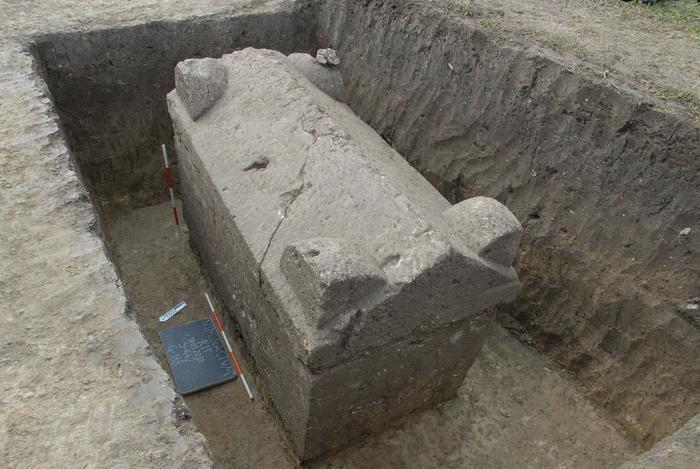
The team’s analysis of ancient DNA shows that during the period of Roman control, there was a large demographic contribution of people of Anatolian descent that left a long-term genetic imprint in the Balkans. This ancestry shift is very similar to what a previous study showed happened in the megacity of Rome itself—the original core of the empire—but it is remarkable that this also occurred at the Roman Empire’s periphery.
A particular surprise is that there is no evidence of a genetic impact on the Balkans of migrants of Italic descent: “During the Imperial period, we detect an influx of Anatolian ancestry in the Balkans and not that of populations descending from the people of Italy,” said Íñigo Olalde, Ikerbasque researcher at the University of the Basque Country and co-lead author of the study. “These Anatolians were intensively integrated into local society. At Viminacium, for example, there is an exceptionally rich sarcophagus in which we find a man of local descent and a woman of Anatolian descent buried together.”
The team also discovered cases of sporadic long-distance mobility from far-away regions, such as an adolescent boy whose ancestral genetic signature most closely matches the region of Sudan in sub-Saharan Africa and whose childhood diet was very different from the rest of the individuals analyzed. He died in the 2nd century CE and was buried with an oil lamp representing an iconography of the eagle related to Jupiter, one of the most important gods for the Romans.
“We don’t know if he was a soldier, slave or merchant, but the genetic analysis of his burial reveals that he probably spent his early years in the region of present-day Sudan, outside the limits of the Empire, and then followed a long journey that ended with his death at Viminacium (present-day Serbia), on the northern frontier of the Empire,” said Carles Lalueza-Fox, principal investigator at the Institute of Evolutionary Biology and director of the Museum of Natural Sciences of Barcelona.
The Roman Empire incorporated “barbarian” peoples long before its collapse
The study identified individuals of mixed Northern European and Pontic steppe descent in the Balkans from the 3rd century, long predating the final breakdown of Roman imperial control. Anthropological analysis of their skulls shows that some of them were artificially deformed, a custom typical of some populations of the steppes, including groups labeled by ancient authors as “Huns.” These results reflect the integration of people from beyond the Danube into Balkan society centuries before the fall of the Empire.
“The borders of the Roman Empire differed from the borders of today’s nation-states. The Danube served as the geographic and military boundary of the Empire. But it also acted as a crucial communication corridor that was permeable to the movement of people attracted by the wealth Rome invested in its frontier zone,” said co-author Michael McCormick, Francis Goelet Professor of Medieval History at Harvard University.
Slavic populations changed the demographic composition of the Balkans
The Roman Empire permanently lost control of the Balkans in the sixth century, and the study reveals the subsequent large-scale arrival in the Balkans of individuals genetically similar to the modern Slavic-speaking populations of Eastern Europe. Their genetic fingerprint accounts for 30-60% of the ancestry of today’s Balkan peoples, representing one of the largest permanent demographic shifts anywhere in Europe in the early medieval period.
The study is the first to detect the sporadic arrival of individual migrants who long preceded later population movements, such as a woman of Eastern European descent buried in a high imperial cemetery. Then, from the 6th century onwards, migrants from Eastern Europe are observed in larger numbers; as in Anglo-Saxon England, the population changes in this region were at the extreme high end of what occurred in Europe and were accompanied by language shifts.
“According to our ancient DNA analysis, this arrival of Slavic-speaking populations in the Balkans took place over several generations and involved entire family groups, including both men and women,” explains Pablo Carrión, a researcher at the Institute of Evolutionary Biology and co-lead author of the study.
The establishment of Slavic populations in the Balkans was greatest in the north, with a genetic contribution of 50-60% in present-day Serbia, and gradually less towards the south, with 30-40% in mainland Greece and up to 20% in the Aegean islands. “The major genetic impact of Slavic migrations is visible not only in current Balkan Slavic-speaking populations, but also in places that today do not speak Slavic languages such as Romania and Greece,” said co-senior author David Reich, professor of genetics in the Blavatnik Institute at Harvard Medical School and professor of human evolutionary biology in Harvard’s Faculty of Arts and Sciences.
Bringing together historians, archaeologists, and geneticists
The study involved an interdisciplinary collaboration of over 70 researchers, including archaeologists who excavated the sites, anthropologists, historians and geneticists.
“This work exemplifies how genomic data can be useful for getting beyond contentious debates around identity and ancestry that have been inspired by historical narratives rooted in nascent nineteenth-century nationalisms and that have contributed to conflict in the past,” Lalueza-Fox said.
The team also generated genomic data from diverse present-day Serbs that could be compared with ancient genomes and other present-day groups from the region.
“We found there was no genomic database of modern Serbs. We therefore sampled people who self-identified as Serbs on the basis of shared cultural traits, even if they lived in different countries such as Serbia, Croatia, Montenegro or North Macedonia”, said co-author Miodrag Grbic, a professor at the University of Western Ontario, Canada.
Co-analyzing the data with that of other modern people in the region, as well as the ancient individuals, shows that the genomes of the Croats and Serbs are very similar, reflecting shared heritage with similar proportions of Slavic and local Balkan ancestry.
“Ancient DNA analysis can contribute, when analyzed together with archaeological data and historical records, to a richer understanding of the history of Balkans history,” said Grbic. “The picture that emerges is not of division, but of shared history. The people of the Iron Age throughout the Balkans were similarly impacted by migration during the time of the Roman Empire, and by Slavic migration later on. Together, these influences resulted in the genetic profile of the modern Balkans—regardless of national boundaries.”
Bibliographic information:
Cell, Olalde and Carrión et al., “A Genetic History of the Balkans from Roman Frontier to Slavic Migrations”, link: https://www.cell.com/cell/
DOI: http://dx.doi.org/10.1016/j.
Press release from the University of Oklahoma.
———————————————————————————————————————————————————-
Ancient Balkan genomes reveal how Slavic Europe was formed
146 individuals who inhabited the Balkan Peninsula during the first millennium have been analysed
The University of the Basque Country (UPV/EHU) is participating in the first reconstruction of the genomic history of the first millennium of the Balkan Peninsula. The study has revealed that the Balkans was a frontier region of ancient Rome as cosmopolitan as the imperial centre, and that Slavic migration arriving in the Balkans from the 6th century onwards represents between 30% and 60% of the ancestry of the Balkan peoples today.
Iñigo Olalde, Ikerbasque Research Fellow at the UPV/EHU and Ramón y Cajal Researcher has, together with the Institute of Evolutionary Biology (IBE: CSIC-UPF) and Harvard University, led a study in which they have, for the first time, reconstructed the genomic history of the first millennium of the Balkan Peninsula. To do so, the team recovered and analysed the ancient genome of 146 individuals who inhabited present-day Croatia and Serbia during that period. The work, published in the prestigious journal Cell, depicts the Balkans as a global, cosmopolitan frontier of the Roman Empire and reconstructs the arrival of Slavic peoples in this region.
For the first time, the team has identified three individuals of African origin who lived in the Balkans under Rome’s imperial rule. Furthermore, the research establishes that the migration of Slavic peoples from the 6th century onwards represented one of the biggest permanent demographic changes in the whole of Europe, the cultural influence of which continues to this day.
The Roman Empire transformed the Balkans into a global region
First the Roman Republic and then the Roman Empire incorporated the Balkans and turned this border region into a crossroads of communications and a melting pot of cultures. This is confirmed by the study which reveals that immigrants from far away were attracted to the region by the economic vitality of the empire.
Through the analysis of ancient DNA, the team was able to identify that, during Roman rule in the region, there was a large demographic influx from the Anatolian Peninsula (located in modern-day Turkey) that left a genetic imprint on the Balkan populations. Yet no trace of Italic ancestry has been observed in the genomes analysed.
“These populations that had come from the East were fully integrated into the local Balkan society. At Viminacium, for example (one of the main cities of the Romans, located in present-day Serbia), we found an exceptionally rich sarcophagus in which a man of local descent and a woman of Anatolian descent had been buried,”
said the lead author of the article Íñigo Olalde, Ikerbasque Research Fellow in the BIOMICs group at the UPV/EHU and research associate at Harvard University (he had previously been a “La Caixa Junior Leader” researcher in the IBE’s Palaeogenomics group).
The team also revealed the sporadic long-distance mobility of three individuals of African descent to the Balkan Peninsula while under imperial rule. One of them was a teenager, whose genetic origins are to be found in the region of present-day Sudan, beyond the boundaries of the ancient Empire.
“The isotopic analysis of the roots of his teeth revealed that in his childhood he had a seafood diet very different from that of the rest of the individuals analysed,”
said Carles Lalueza-Fox, senior researcher at the Institute of Evolutionary Biology (IBE) and director of the Museum of Natural Sciences of Barcelona (MCNB).
What is more, he had been buried with an oil lamp representing an iconography of the eagle, which is related to Jupiter, one of the most important gods for the Romans. Lalueza-Fox pointed out that
“archaeological analysis of his grave reveals that he may have been part of the Roman military forces, so we would be talking about an immigrant who had travelled from a long way away to the Balkans in the 2nd century CE”. “This indicates to us a diverse, cosmopolitan Roman Empire, which embraced populations from far beyond the European continent.”
Press release from the University of the Basque Country – UPV/EHU.ove term: UPV/EH

